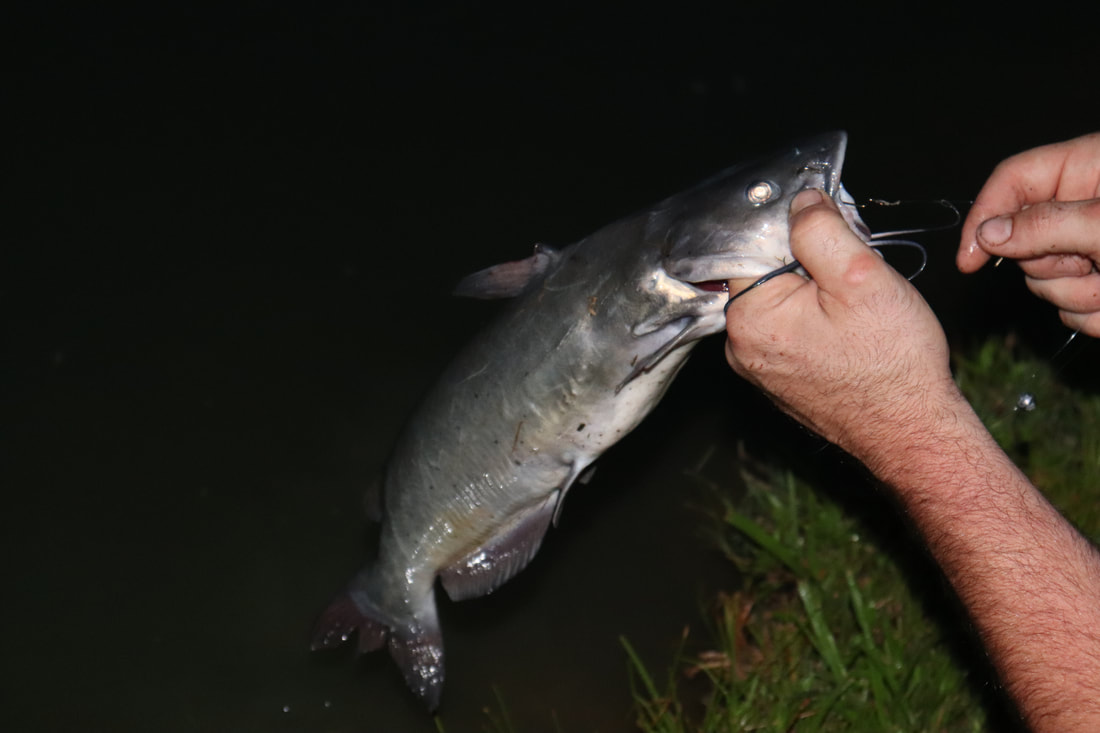|
Josh Boyd, column and photos: The familiar twitch of a rod tip, followed by a pole bending double to the accompanying sound of line being stripped from a reel is enough to elevate any angler's heart rate. The excitement of the bite and anticipation of the fight that awaits often elicits a frenzied response from a fisherman. Each crank of the reel brings the fisherman that much closer to landing their prize. With a sense of exhaustion from a hard won fight and the rush of adrenaline leaving them shaking, an angler drags the whiskered behemoth from the murky waters. These are the realities of a successful day on the water fishing for catfish. Numerous reasons exist for catfish continually being among one of the most commonly sought after fish species in waterways all across America. Their relative abundance in many regions, relentless hard fighting tendencies, and well deserved reputation as quality table fare are just a few of the reasons for the popularity of catfishing. During the hot biting summer months of June-August, untold numbers of individuals looking for fishing fun will flock to bodies of water day and night in pursuit of hard fighting catfish. Catfish are generally fished for using relatively heavy tackle. Their reputation as stout fighters warrant such a need. Care must be taken when selecting a catfish rod to evaluate the size of fish that you are most likely to be catching. When fishing in a farm for channel catfish where the average fish is likely to be one to five pounds, far less rod is required than when targeting larger flathead catfish in a lake or river. While it is important for a rod to be strong enough to complete the desired task, fishing with too heavy of a rod will, in some cases, make the detection of lighter biting smaller catfish difficult. Reels for catfishing come in the form of spincasting, spinning, and baitcasting. All of these reels have merit in certain situations, but ultimately the decision of which reel to choose comes down to the size of catfish that you intend on pursuing. Generally, 20 pound test or greater line is the popular choice among those angling for catfish. No matter the chosen test of line, it is advisable to ensure that the drag on your reel of choice is set properly before you venture out on the water. A properly adjusted drag serves to circumvent the issue of line breakage, while also ensuring an adequate amount of line tension for making forward progress when working a sizable catfish to shore. Several different varieties of tackle options exist on the market for catfishing today. Hooks come in multiple forms with bait holder, treble, and circular hooks being the most commonly used offerings. All of these hook forms come in varying sizes to custom suit your needs. Likewise, sinkers come in multiple forms and sizes as well. Bell, egg, flat, and split shot sinkers are among some of the most popular styles.
Bait choices for catfish are as numerous as the day is long. Nightcrawlers, chicken livers, and production stink or dough baits are favorites among anglers pursuing channel catfish. Many who fish predominantly for flathead catfish prefer live bait such as small bluegill and use it to much success. Catfish are known to readily feed on a wide array of food sources, therefore making bait selection somewhat of a trial and error process. This summer, take to the water in search of some of the most enjoyable fishing that the state of Kentucky has to offer. Fish after fish and smile after smile, your day will be much the richer for doing so. Then watch the sunset while reflecting on the joys of the day over a dinner of fresh catfish fillets.
0 Comments
Your comment will be posted after it is approved.
Leave a Reply. |
Archives
April 2024
|
|
Copyright 2014-2024 The Edmonson Voice.
The Edmonson Voice logos are registered trademarks. Call or text: 270-597-6550 editor@edmonsonvoice.com PO BOX 94 BROWNSVILLE, KY 42210 CLICK HERE FOR DEADLINE INFO |










